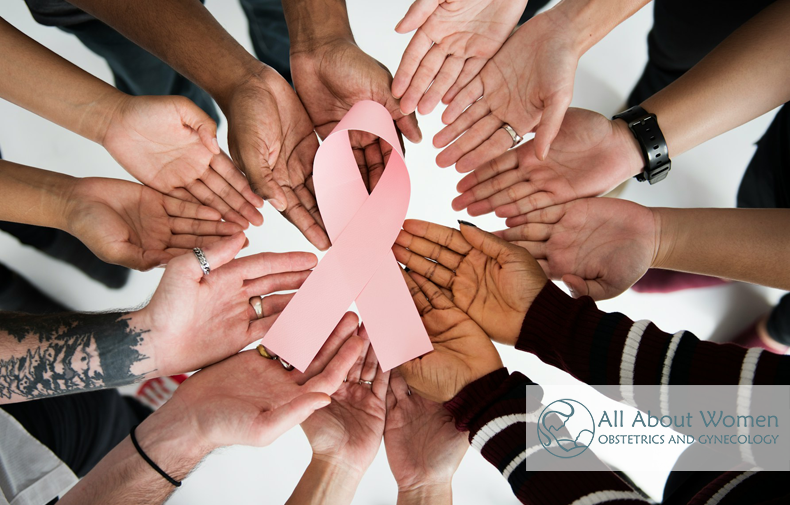
October is Breast Cancer Awareness Month. While breast cancer remains a significant health concern for women in 2024, we’re happy to report that there have been some positive trends in recent years.
Thanks to a combination of factors, including awareness campaigns, advances in early detection, and improved treatments, breast cancer death rates have decreased by an astounding 42% since 1989!
Unfortunately, the decline in breast cancer death rates has started to slow a bit in recent years, meaning that breast cancer still poses a major risk, particularly for certain groups. So, it’s crucial for women to be aware of their individual risk factors and know the signs of early breast cancer so they can increase their chances of catching breast cancer early when it’s most treatable.
Here’s a look at some of the key breast cancer statistics for 2024 from the American Cancer Society (ACS):
- Breast cancer is the second most frequently diagnosed cancer (after skin cancer) among women in the U.S., accounting for approximately 30% of new female cancer cases each year.
- Women in the U.S. have a 1 in 8 chance of developing breast cancer during their lifetimes and a 1 in 40 chance of dying from the disease. This means that only about 2.5% of women who develop breast cancer actually die from it.
- Approximately 42,250 women are projected to die from breast cancer this year, making it the second leading cause of cancer-related deaths among women, behind lung cancer.
- In 2024, about 310,000 women will be diagnosed with invasive breast cancer, and another 56,000 will be diagnosed with ductal carcinoma in situ (DCIS), a non-invasive form of breast cancer.
- Black women experience the highest mortality rate from breast cancer, partly due to a greater prevalence of aggressive types like triple-negative breast cancer, while Asian and Pacific Islander women have the lowest mortality rate from breast cancer.
The good news: There are currently over 4 million breast cancer survivors in the U.S., reflecting the significant strides that have been made in early detection and treatment.
Follow these tips to reduce your risk of developing breast cancer.
What are the warning signs of breast cancer?
One of the most common signs of breast cancer is the appearance of a new lump or mass in the breast. While most lumps are not cancerous, it’s important to take any new lump seriously.
Lumps can vary in shape, size, and feel—some may be hard with irregular edges, while others might be soft, round, or even tender. One thing to keep in mind is that just because a lump is painless doesn’t necessarily mean it’s benign, so don’t ignore it.
Regardless of how the lump feels or whether it causes discomfort, it’s crucial to have it evaluated by a health care professional to rule out cancer or other health issues.
Beyond lumps, there are other key symptoms to watch for, including:
- Swelling of all or part of the breast. Even if you don’t feel a lump, any unexplained swelling in the breast should be examined.
- Skin dimpling. The skin on the breast may take on a dimpled appearance, sometimes resembling the texture of an orange peel.
- Breast or nipple pain. Persistent pain in the breast or nipple area can sometimes be a sign of cancer.
- Nipple retraction. If the nipple starts to turn inward instead of pointing outward, this could indicate cancer.
- Changes in the breast skin. Redness, dryness, flaking, or thickening of the skin on the breast or nipple can also be a warning sign.
- Unusual nipple discharge. Any discharge from the nipple that isn’t breast milk, especially if it’s bloody or clear, should be evaluated.
- Swollen lymph nodes. Swelling under the arm or near the collarbone could suggest that the cancer has spread to the lymph nodes, even if the tumor in the breast is too small to be felt.
It’s important to remember that many of these symptoms can also be caused by non-cancerous conditions. However, any new changes in your breasts should be promptly evaluated by your well-woman provider so they can determine the cause and, if necessary, begin appropriate treatment.
What’s the best way to detect breast cancer in its earliest form?
The best way to detect breast cancer in its earliest stages is through regular screening, especially mammograms. Mammograms are low-dose X-rays that can identify breast changes, such as small lumps or abnormalities, often years before physical symptoms appear.
So, how often should women have mammograms?
The answer to this depends on your age and risk factors, but for women with average risk, the current ACS screening recommendations are as follows:
- Women between 40 and 44 should consider having a mammogram once a year, but this is optional.
- Women between 45 and 54 should have a mammogram every year.
- After age 55, women can choose to switch to mammograms every other year or continue annually.
3D mammograms are becoming more common and can be especially helpful for women with dense breasts, though they may cost more. While breast self-exams and clinical breast exams aren’t routinely recommended for average-risk women, knowing how your breasts normally look and feel is still crucial for identifying any unusual changes early.
Schedule your next breast cancer screening with All About Women
With Breast Cancer Awareness Month just getting underway, it’s the perfect time to prioritize your health and schedule a breast cancer screening. Early detection saves lives, and regular mammograms are essential in catching breast cancer in its most treatable stages.
If you live in the Gainesville or Lake City area, the experienced gynecologists at All About Women are here to provide you with personalized care and guidance through every step of the screening process.



